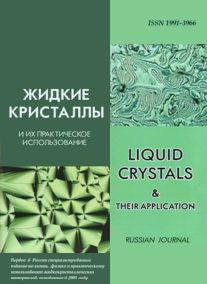|

|
Liquid Crystals and their Application
Russian Journal Zhidkie kristally i ikh prakticheskoe ispol'zovanie Жидкие кристаллы и их практическое использование |

|
|

|

|
|
|
Menu

|
|
|
|
|
Zhidk. krist. ikh prakt. ispol'z. = Liq. Cryst. and their Appl., 2017, 17 (4), 83—89.
DOI: 10.18083/LCAppl.2017.4.83 |

|
|
Studying of Structural Changes of Graphene Layers of Carbon Nanotubes Functionalized by Raman Spectroscopy
|
T. P. Dyachkova1, A. V. Rukhov1, E. N. Tugolukov1, N. V. Usol'tseva2, Yu. A. Khan1, N. A. Chapaksov2
|
Author affiliations
1Tambov State Technical University,
106 Sovetskaya St., Tambov, 392000, Russia
E-mail: dyachkova_tp@mail.ru
2Research Institute of Nanomaterials, Ivanovo State University,
39 Ermak St., Ivanovo, 153025, Russia
|
|
Abstract
The effect of oxidizing treatment conditions (concentrated nitric acid, hydrogen peroxide vapor) and direct fluorination on the structural integrity of graphene layers of carbon nanotubes (CNTs) was studied using Raman spectroscopy-based method. Changes in the functionalization of the CNTs defect indices estimated by the intensity of the characteristic peaks: D (1320–1350 cm–1), G (1550–1580 cm–1), 2D ( ∼2660 cm–1), D+G ( ∼2900 cm–1), and 2G ( ∼3200 cm–1) in Raman spectra and their ratios were elucidated. It was established that ordering of the CNTs graphene layers can be observed at the initial stage of various oxidation and fluorination methods. This can be
apparently relate to the predominance of the processes of residual amorphous phase removal. Then, the defectiveness indicators begin to grow, thereby indicating the destructive changes in nanotubes during the functionalization. With each chemical treatment method, it is possible to minimize the destruction of the CNTs surface by selecting the process conditions. The CNTs oxidized in hydrogen peroxide vapor are characterized by the most ordered structure of the graphene layers.
Keywords: functionalization, oxidation, direct fluorination, carbon nanotubes, Raman spectroscopy
|
|
|
|
|
|




